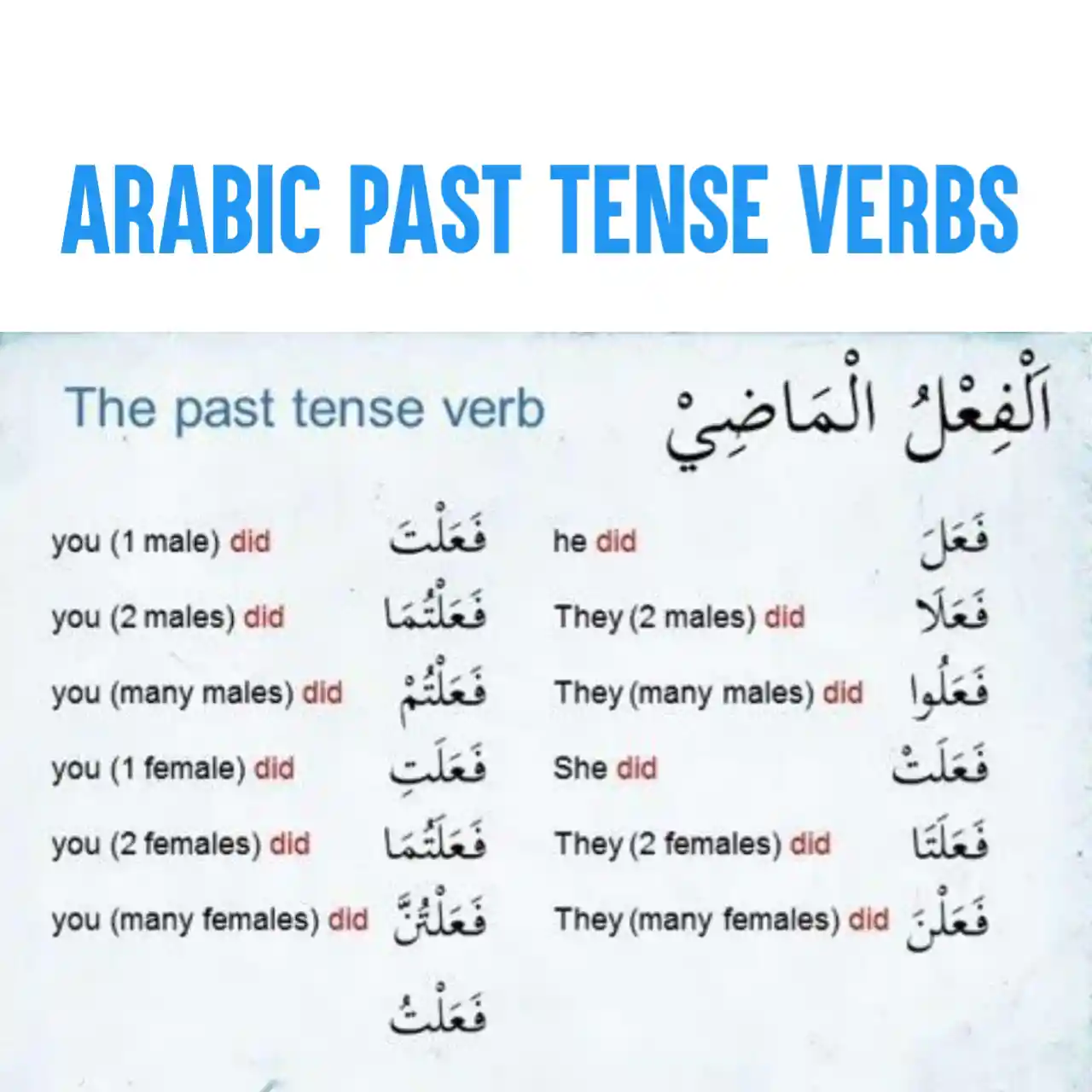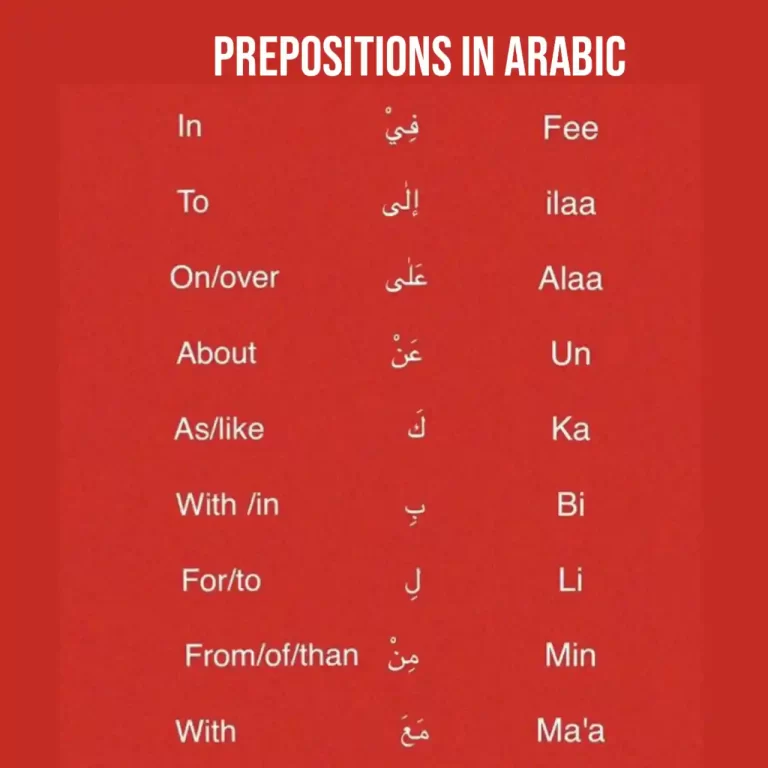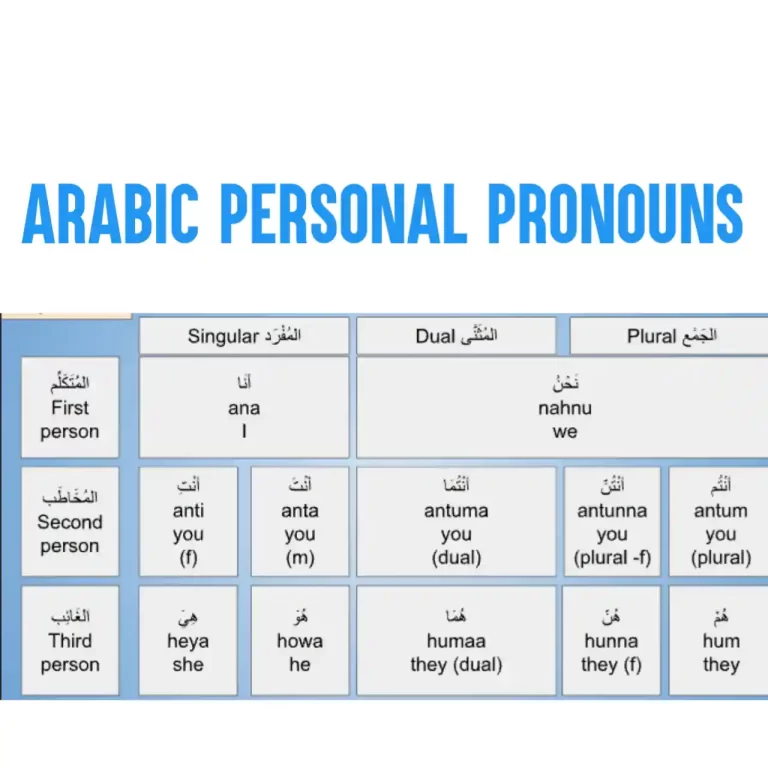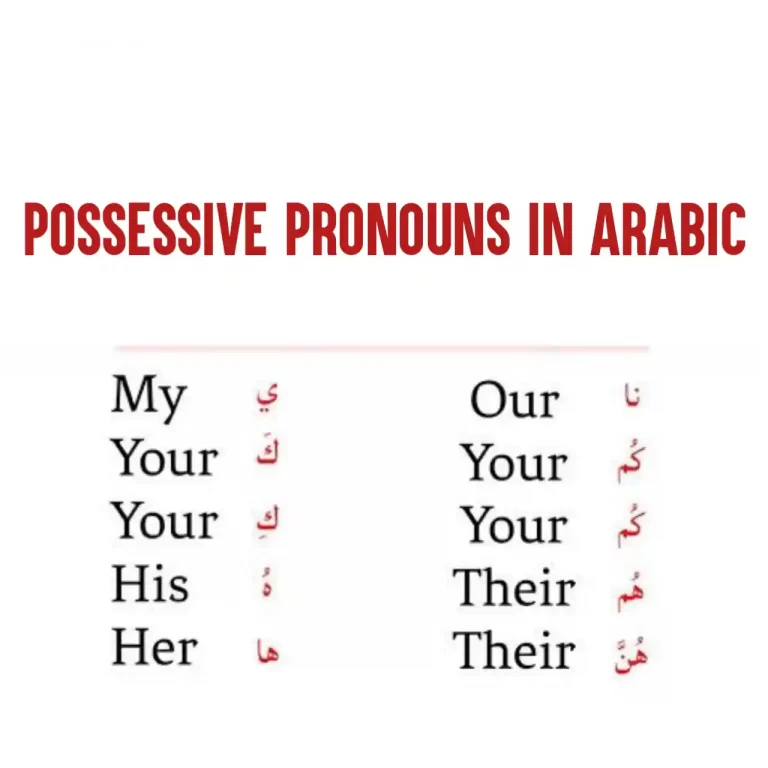Arabic Past Tense CONJUGATION, 14 Forms And Examples
Arabic Past Tense could be a mind-numbing learning task. But when approached with an open mind and willingness to learn, you should be able to grasp it quite easily.
Advertisements
The past tense in Arabic talks about specific actions that were completed in the past.
When you talk about an action that took place and was fully completed in the past, you use the past tense. It is also used to express something that was true in the past.
Past Tense In Arabic Language
The Arabic word for past tense is الْفِعْلِ الْمَاضِي and pronounced as fi’il maadiy. The sign of the past verb comes either without any letter such as kataba كَتَبَ (this is the standard “root” form we use when we discuss a verb in Arabic).
How To Identify Arabic Past Tense
The Arabic past tense verb has signs on it and to identify them, all past verbs are suffixed and not prefixed with letters – i.e. the letter to indicate the pronoun comes after the verb. This pronoun is the doer (person performing the action) in the verbal sentence.
Advertisements
The suffixed pronouns attached to past tense in Arabic include (تُ، تَ، تِ) as in katabtu, katabta and katabti كَتَبْتُ، كَتَبْتَ، كَتَبْتِ, or the plural of these pronouns (نَا، تُمْ، تُنَّ) as in katabna, katabtum and katabtunna (كَتَبْنَا، كَتَبْتُمْ، كَتَبْتُنَّ).
How Many Types Of Past Tense Are There In Arabic?
Arabic past tense are categorized according to their minimum root number of letters.
- A Threefold Verb الفعل الثلاثى has three letters as its root; كتبَ = He wrote
- A Fourfold Verb الفعل الرباعى has four letters as its root; أطلقَ = He launched.
- A Fivefold Verb الفعل الخماسى has five letters as its root; تعلَّمَ = He learnt.
- A Sixfold Verb الفعل السداسى has six letters as its root; استخرجَ = He took/dug out.
In Arabic language verbs as well as nouns are divided into مَبْنِيّ Mabneyy and مُعْرَب Mu’rab. Mabneyy means it has a fixed case ending (the shape of the last letter) no matter its position in the sentence (so the last letter of the verb is always pronounced the same, with the same diacritic).
Mu’rab means that the case ending changes according to its position in the sentence and the grammatical case (so the last letter of the verb will have a different pronunciation and diacritic).
The past tense is always “Mabneyy” مَبْنِيّ.
Advertisements
- Learn Arabic grammar
- Present Tense In Arabic
- Noun In Arabic
- 17 Prepositions In Arabic
- Arabic Possessive Pronouns
- Arabic Pronouns
Arabic Past Tense Verbs Examples
Here are some examples of past tense in Arabic with their meanings.
- He read ….. قَرَأَ
- He went ….. ذَهَبَ
- He helped ….. نَصَرَ
- He said ….. قال
- He opened ….. فتح
- He ate ….. اكل
- He drank ….. شرب
- He slept …. نام
- She wrote …. كتبت
- She hit …. ضربت
- She went …. ذهبت
- She sent …. بعثت
- He left ….. ترك
- He entered ….. دخل
- He succeed ….. نجح
Arabic Past Tense Conjugation
For basic past tense conjugation, the root of the verb, such as دَرَسَ or سَكَنَ, is followed by a suffix according to who or what it is referring to. The root of verb in Arabic is the singular male form of the verb.
It is very important to note what form the root of the verb takes (this is for when one wants to become advanced). This can cause the root of the verb to change in accordance to the conjugation.
Advertisements
The first conjugation of the past tense verb is achieved by placing a given set of base letters on the pattern فَعَلَ, فَعِلَ, or فَعُلَ.
To conjugate past tense in Arabic Arabic, take a set of base letters and placing them on the pattern فَعَلَ will give us the first conjugation of the verb in the past tense.
Let’s use the root letters دَ رَ سَ which afford the meaning of “studying”. The word دَرَسَ, then, means “he studied”.
Arabic Past Tense Conjugation Chart
Below is the conjugation chart of past tense of Arabic word دَرَسَ.
| English Pronoun | Arabic Pronouns | Arabic Past Verbs |
| Singular | ||
| I | أنا | دَرَسْتُ |
| You (masc.) | أنتَ | دَرَسْتَ |
| You (fem.) | أنتِ | دَرَسْتِ |
| He or it | هُوَ | دَرَسَ |
| She or It | هي | دَرَسَتْ |
| Dual | ||
| We (No dual) | نحن | دَرَسْنا |
| You two (masc. And fem.) | انتما | درستا And درسا |
| They (masc.) Two | هما | درستما |
| They (fem.) two | هما | درستما |
| Plural | ||
| We | نحن | دَرَسْنا |
| you (group masc.) | أنتم | دَرَسْتُم |
| you (group fem.) | أنتن | دَرَستُنَّ |
| they (group masc.) | هم | دَرَسوا |
| they (group fem.) | هن | دَرَسنَ |
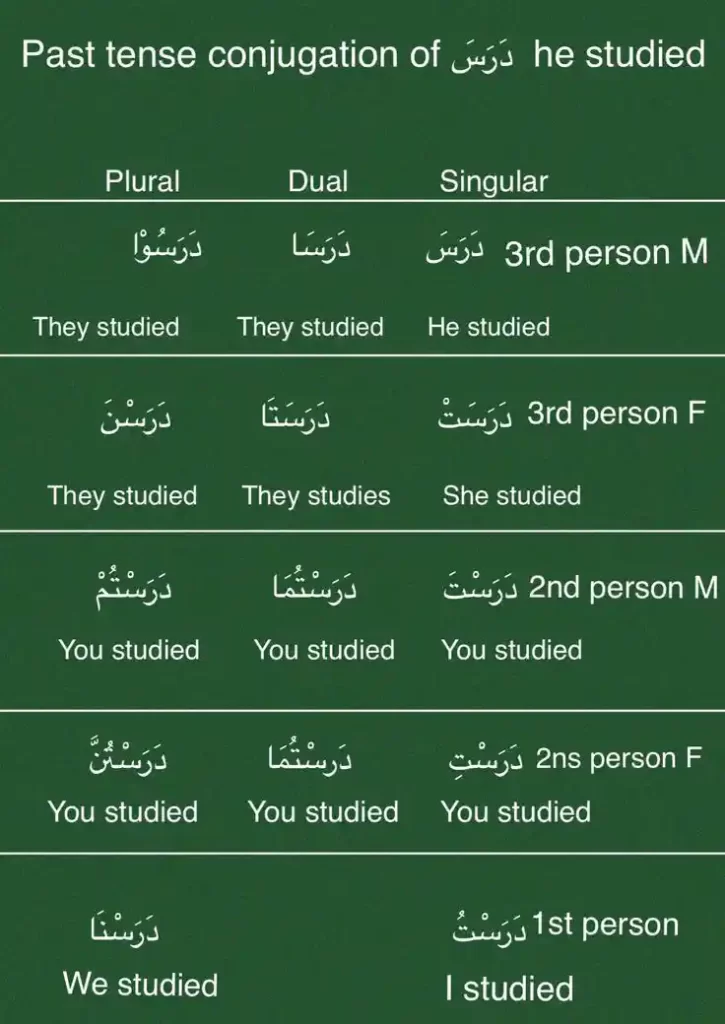
14 Forms Of Past Tense in Arabic
Below is the full forms of past tense in Arabic. Since a verb must agree with its subject in gender and number, the shape of the verbs changes in the past tense as in the table below.
| English Pronoun | Arabic Pronouns | Arabic Past Verbs |
| Singular | ||
| I | أنا | كَتبْتُ |
| You (masc.) | أنتَ | كتبْتَ |
| You (fem.) | أنتِ | كتبْتِ |
| He or it | هُوَ | كتبَ |
| She or It | هي | كتبَتْ |
| Dual | ||
| We (No dual) | نحن | كتَبْنَا |
| You two (masc. And fem.) | انتما | كتَبَتَا and كتَبَا |
| They (masc.) Two | هما | كتَبتُمَا |
| They (fem.) two | هما | كتَبتُمَا |
| Plural | ||
| We | نحن | كتَبْنَا |
| you (group masc.) | أنتم | كتبتُم |
| you (group fem.) | أنتن | كتَبْنَّ |
| they (group masc.) | هم | كتبُوا |
| they (group fem.) | هن | كتبْتُنَ |
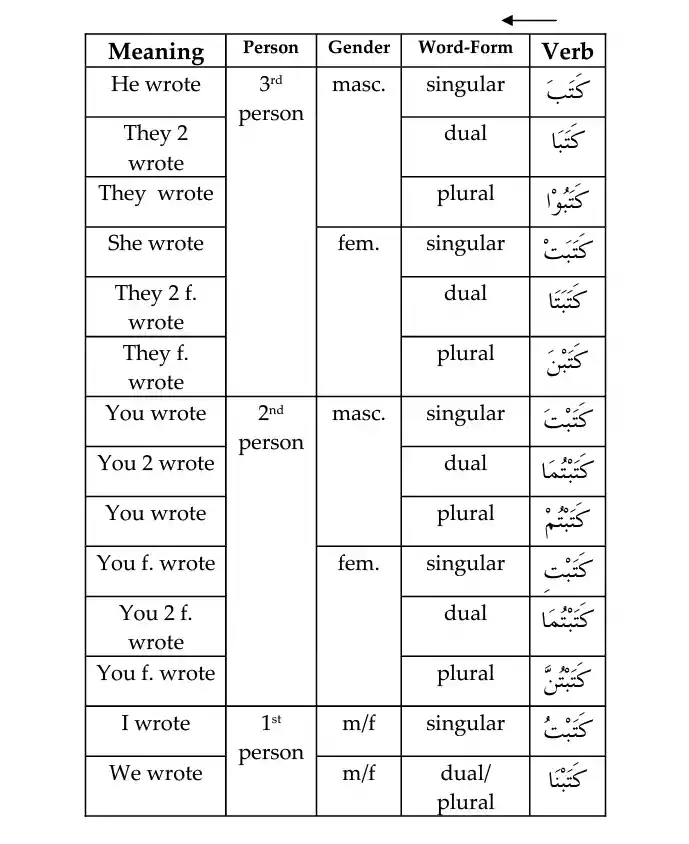
Affirmative And Negative Past Tense In Arabic
An affirmative past tense verb is negated simply by prefixing it with the particle ما. For example;
- He didn’t study … ما دَرَسَ
- He didn’t help …. ما نَصَرَ
- He didn’t drink …. ما شرب
Advertisements

